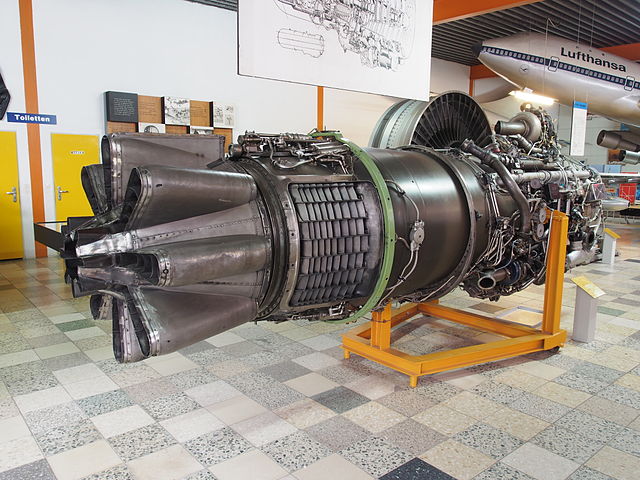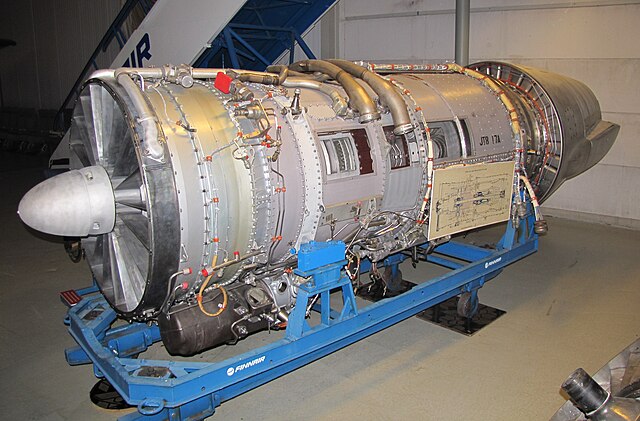The Pratt & Whitney PW4000 is a family of dual-spool, axial-flow, high-bypass turbofan aircraft engines produced by Pratt & Whitney as the successor to the JT9D.
It was first run in April 1984, was FAA certified in July 1986, and was introduced in June 1987.
With thrust ranging from 50,000 to 99,040 lbf, it is used on many wide-body aircraft.
Pratt & Whitney PW4000
A PW4074 on an ANA 777-200 under maintenance with the fan doors open, showing the fan disk inside the inlet cowling at the front of the engine
PW4077 titanium-bladed fan section with containment ring in the United Airlines maintenance facility at SFO
A -94 powering the Boeing 767 with 38 fan blades
A turbofan or fanjet is a type of airbreathing jet engine that is widely used in aircraft propulsion. The word "turbofan" is a combination of the preceding generation engine technology of the turbojet, and a reference to the additional fan stage added. It consists of a gas turbine engine which achieves mechanical energy from combustion, and a ducted fan that uses the mechanical energy from the gas turbine to force air rearwards. Thus, whereas all the air taken in by a turbojet passes through the combustion chamber and turbines, in a turbofan some of that air bypasses these components. A turbofan thus can be thought of as a turbojet being used to drive a ducted fan, with both of these contributing to the thrust.
Chevrons on an Air India Boeing 787 GE GEnx engine
Rolls-Royce Conway low-bypass turbofan from a Boeing 707. The bypass air exits from the fins, while the exhaust from the core exits from the central nozzle. This fluted jetpipe design is a noise-reducing method devised by Frederick Greatorex at Rolls-Royce
General Electric GEnx-2B turbofan engine as used on a Boeing 747–8. View into the bypass duct looking forward from the bypass nozzle and showing fan exit stators/fan blades
The widely produced Pratt & Whitney JT8D used on many early narrowbody jetliners. The fan is located behind the inlet guide vanes.








